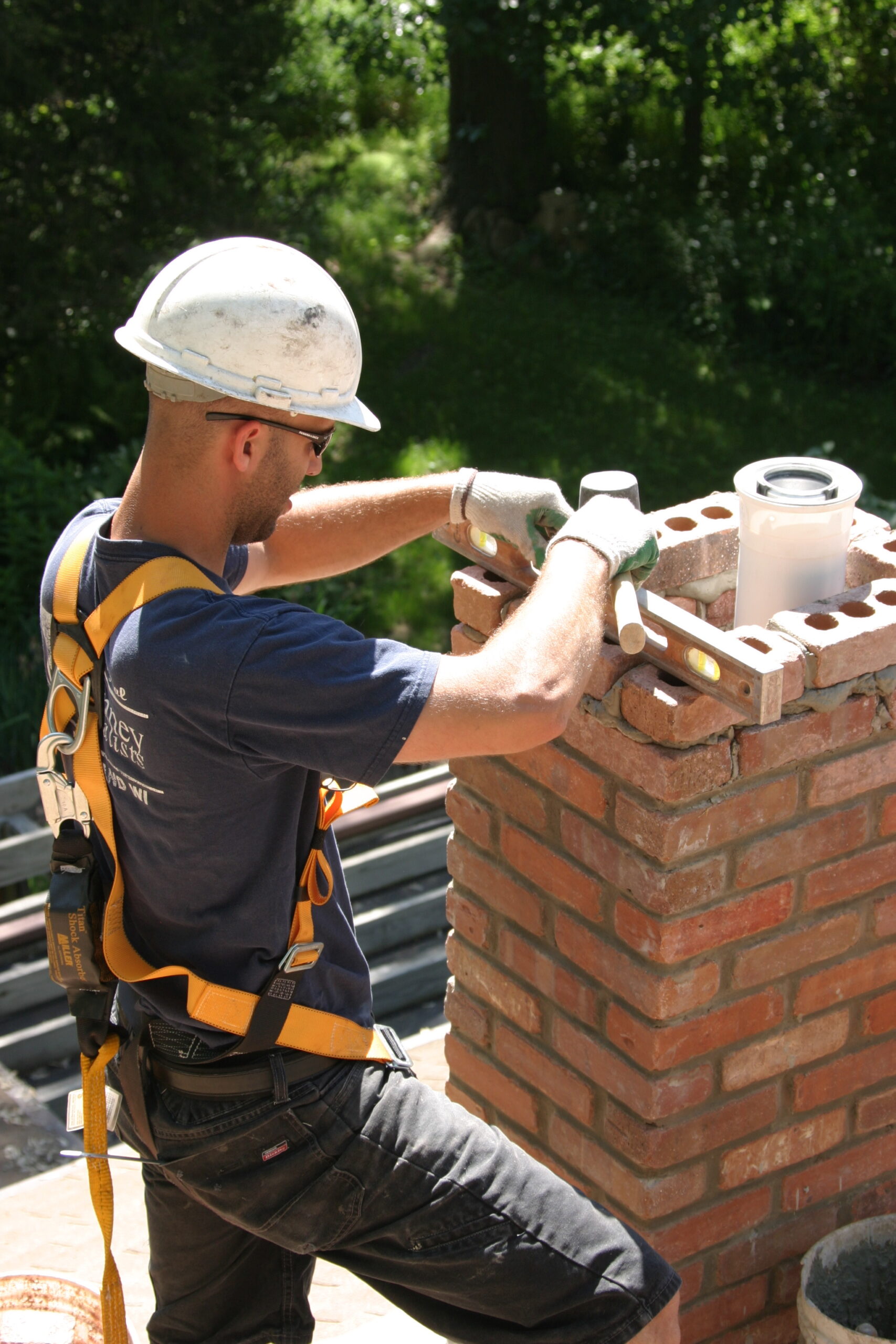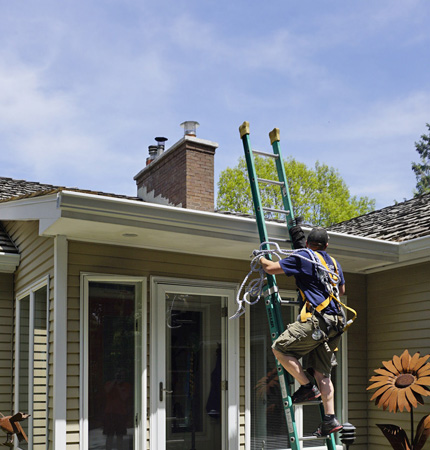How to Find Out if Your Chimney Was Damaged Over the Winter
Wisconsin winters aren’t easy on chimneys. Extreme cold outside, extreme heat inside and plenty of other factors can cause chimneys to become damaged and possibly dangerous after many months of use. Let’s look at some of the ways a chimney can suffer damage and how to address them.
 Chimney masonry damage
Chimney masonry damage
Your chimney is only as sound as its structure, and that means the bricks and mortar that were used to build it. When cracks appear in mortar joints, water from rain and snow can get inside and then freeze, expand and cause extensive deterioration.
Bricks can become loose (spalling) and allow even more water inside. A cracked chimney liner will leave the masonry’s interior susceptible to corrosion from flue gases. Chimney fires – including those you don’t know about – will eventually leave a chimney’s bricks and mortar severely compromised.
An inspection by a CSIA-certified chimney technician will determine if damage exists and its extent. Chimney repair or rebuilding will be able to restore strength and serviceability to your chimney.
Damaged chimney crown
The cement layer at the top of your chimney is the chimney crown. Its purpose is to deflect water away from the bricks and interior chimney passages beneath it. Severely cold weather and freeze/thaw cycles can lead to deterioration of the crown. For minor damage, crowns can be waterproofed; if extensive damage exists, the crown will need to be rebuilt.
Leaky chimney
Chimneys can show signs of leaking for several reasons – all of which need to be inspected and addressed right away. Problems with chimney caps, flue covers, chase tops, crowns, flashing, masonry and more can lead to a chimney leak. Here are symptoms to look for:
- Dampness on the ceiling or walls adjacent to the fireplace
- Water dripping into the firebox
- White stains on the outside of the chimney (efflorescence)
- A damper that squeaks and is hard to fully open and close
- A strong, musty odor coming from the fireplace
Creosote buildup
Cold winters with a lot of fireplace use mean extra creosote inside your flue. Creosote is highly flammable and is the cause of most chimney fires in the U.S. each year. All fire-safety agencies recommend yearly chimney sweep services to remove creosote and keep the chimney safe.
Chimney sweeps certified through the Chimney Safety Institute of America (CSIA) use specialized tools and equipment including rotating brushes, motorized cleaning rods, scrapers, solvents and industrial vacuums to clean creosote out of all kinds of chimneys and vent systems.
 The value of annual chimney inspections
The value of annual chimney inspections
A CSIA-certified chimney inspector can save you big money on repairs and keep your home and family safe by detecting problems in your chimney system early, before they get out of hand. Springtime, just after the burning season, is an ideal time to schedule your annual inspection.
Basic chimney inspections cover all visible areas of the chimney structure and its components. More advanced inspections are performed when serious damage is known or suspected, when a new appliance is being added to the chimney when the home is being sold and in other unique circumstances.
Chimney Specialists of Highland, WI, is ready to help with all your chimney needs each spring and at any other time of year. We offer certified chimney sweep, chimney repair, chimney inspection and other services to keep your chimney, your home and your family safe.
Contact us today in the Highland area at (608) 929-4887. In and around Dubuque, Iowa, contact Dubuque Fireplace & Patio at (563) 582-5156.







